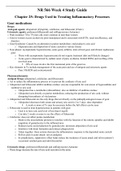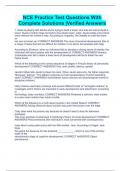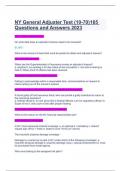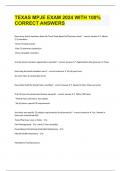Other
NR566 Week $ Study Guide_Chapter 25: Drugs Used in Treating Inflammatory Processes
- Course
- AIT Nursing (NR566)
- Institution
- Thompson River University (TRU )
NR 566 Week 4 Study Guide Chapter 25: Drugs Used in Treating Inflammatory Processes Gout medications Drugs: Anti-gout agents: allopurinol (Zyloprim), colchicine, and febuxostat (Uloric) Uricosuric agents: probenecid (Benemid) and sulfinpyrazone (Anturane) o Peak incidence 70 to 79 years ol...
[Show more]






